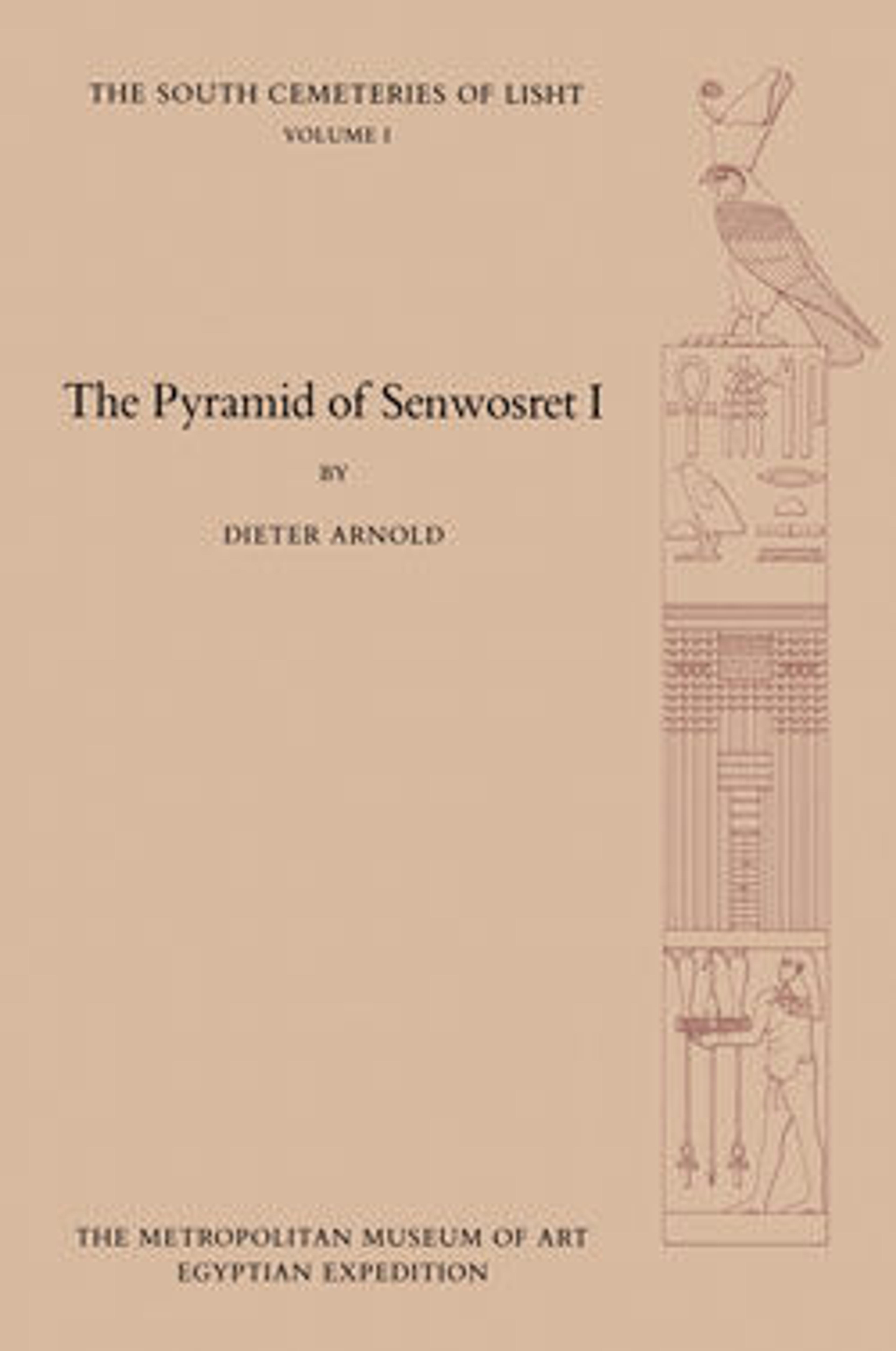Osiride statue of Senwosret I
Along both sides of the causeway leading from the valley temple at the edge of the agricultural land to Senwosret I’s pyramid were niches with royal statues of the so called Osiride type. Each statue exhibits a tightly wrapped body with arms crossed over the chest and hands closed to fists. The statues along the southern causeway wall wore the tall white crown of Upper Egypt (like the one here); the ones along the northern wall, the red crown of Lower Egypt.
The meaning of this type of representation is still being debated. The mummy form suggests connections with the god Osiris but also Ptah and others. Most probably, the wrapped body represents an inert phase of being preceding rejuvenation, showing the potential for movement (note the articulated knees) in a temporarily paralyzed body. The Osiride statues along the causeway would accordingly symbolize a transition from the place of embalming by the valley temple to the place of resurrection at the pyramid.
The meaning of this type of representation is still being debated. The mummy form suggests connections with the god Osiris but also Ptah and others. Most probably, the wrapped body represents an inert phase of being preceding rejuvenation, showing the potential for movement (note the articulated knees) in a temporarily paralyzed body. The Osiride statues along the causeway would accordingly symbolize a transition from the place of embalming by the valley temple to the place of resurrection at the pyramid.
Artwork Details
- Title:Osiride statue of Senwosret I
- Period:Middle Kingdom
- Dynasty:Dynasty 12
- Reign:reign of Senwosret I
- Date:ca. 1961–1917 B.C.
- Geography:From Egypt, Memphite Region, Lisht South, Pyramid of Senwosret I, MMA excavations, 1908
- Medium:Limestone
- Dimensions:h: 177.8 cm (70 in.), w: 63.5 cm (25 in.), d: 80.6 cm (31 3/4 in.)
- Credit Line:Rogers Fund, 1908
- Object Number:08.200.1
- Curatorial Department: Egyptian Art
More Artwork
Research Resources
The Met provides unparalleled resources for research and welcomes an international community of students and scholars. The Met's Open Access API is where creators and researchers can connect to the The Met collection. Open Access data and public domain images are available for unrestricted commercial and noncommercial use without permission or fee.
To request images under copyright and other restrictions, please use this Image Request form.
Feedback
We continue to research and examine historical and cultural context for objects in The Met collection. If you have comments or questions about this object record, please contact us using the form below. The Museum looks forward to receiving your comments.
